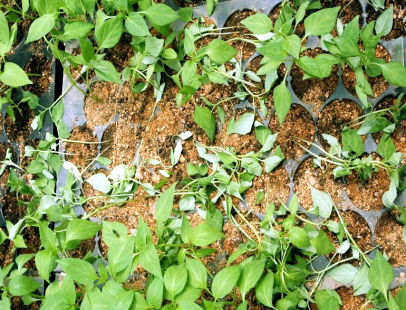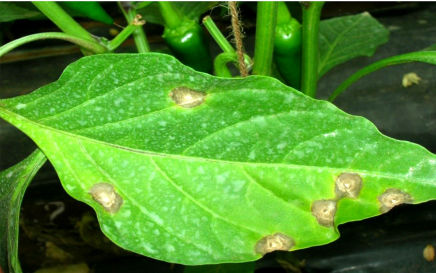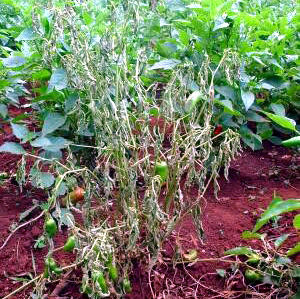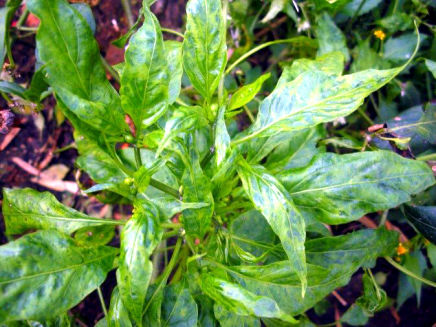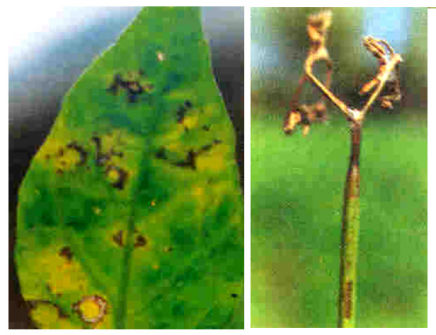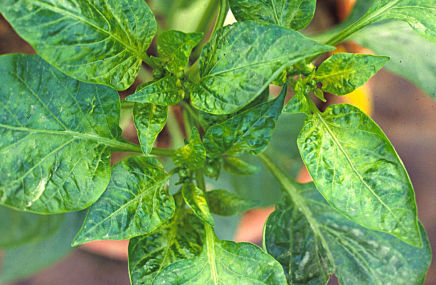
Chilli diseases have always been an important factor for the loss.
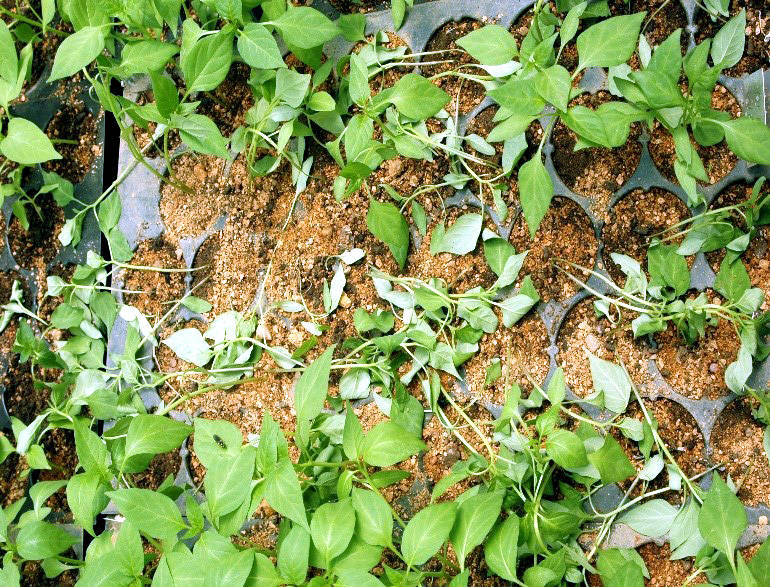
DAMPING-OFF - SEEDLINGS
(Pythium)
Infection occurs on stem at soil level.
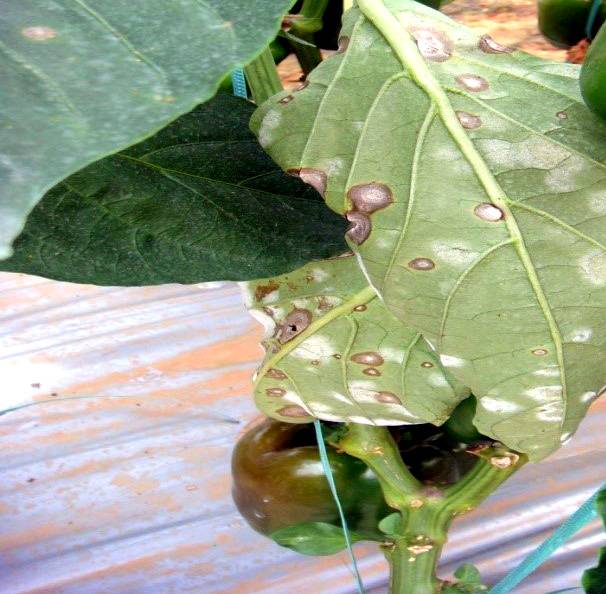
POWDERY MILDEW
(Leveillula taurica)
The disease first appears as tiny white spots on the under surface of the leaves
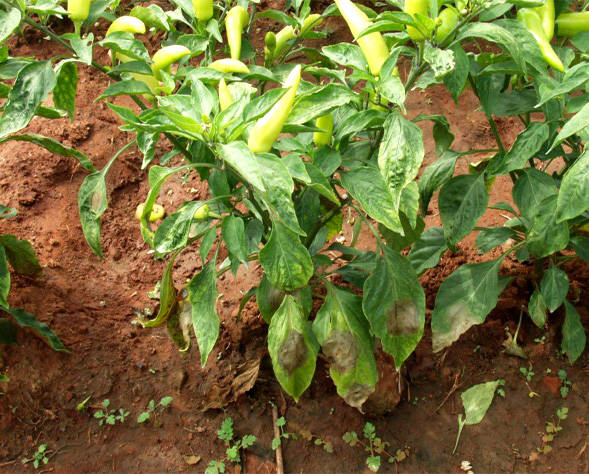
PHYTOPHTHORA BLIGHT
(Phytophthora capsici)
Initial symptoms are water soaked small dark green spots
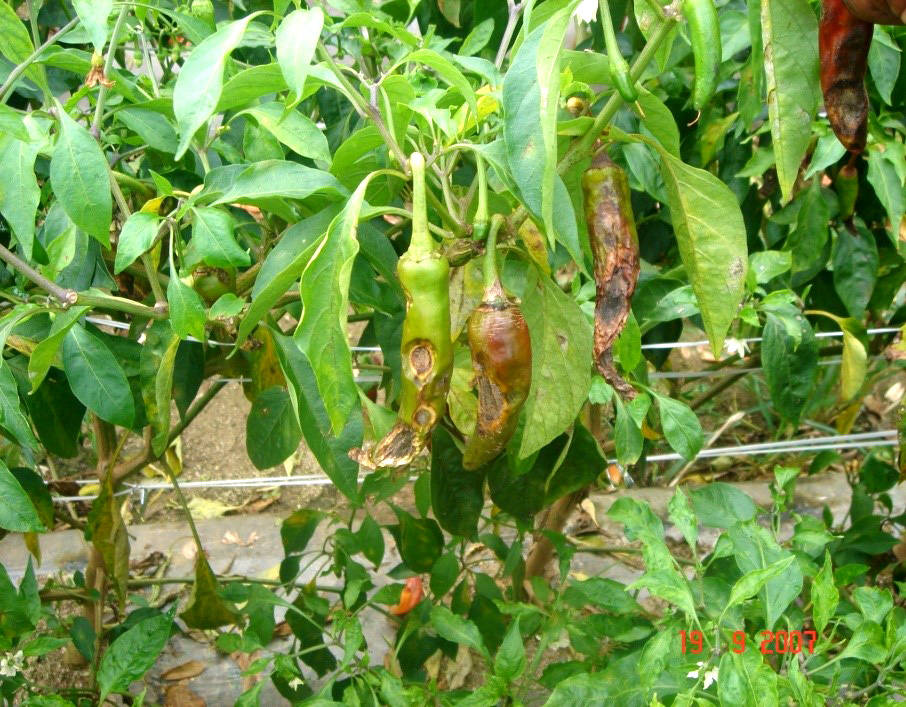
ANTHRACNOSE
(Colletotrichum capsici, and C. gloeosporioides)
Anthracnose, also known as ripe fruit rot disease.

LEAF SPOT
(Cercospora capsici )
Oval or oblong spots with light grey centres on leaves, stalks and stem.
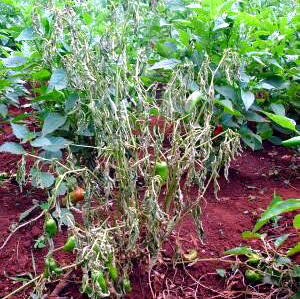
BACTERIAL WILT
(Ralstonia solanacearum)
This pathogen is soil-borne in nature and mostly affects solanaceous crops
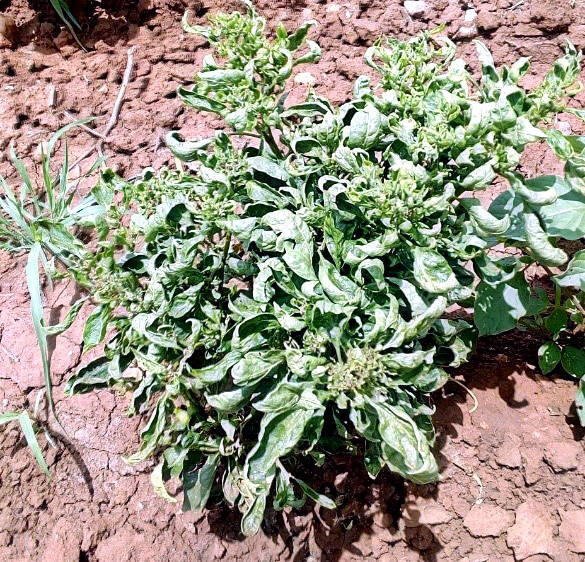
CHILLI LEAF -CURL DISEASE
(Chilli leaf curl virus, Begomovirus genus of Geminiviridae)
Symptoms consist of upward and downward curling of leaves.
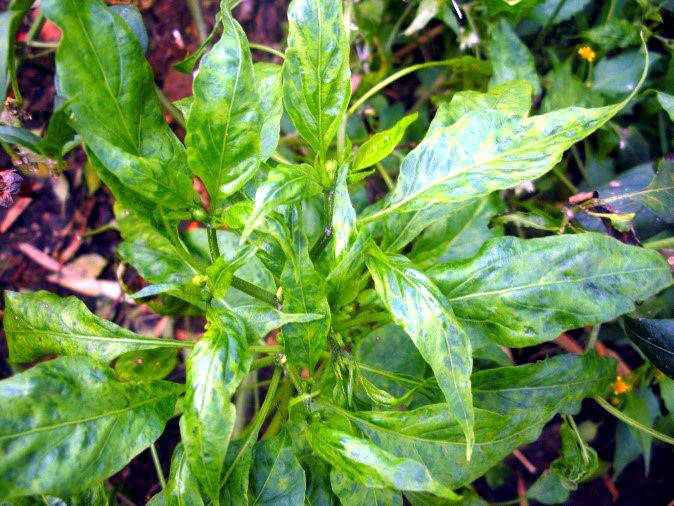
CHILLI MOSAIC AND LEAF DISTORTION DISEASE
(Cucumber mosaic virus)
Symptoms are extremely variable depending on the variety/ hybrid and on weather.
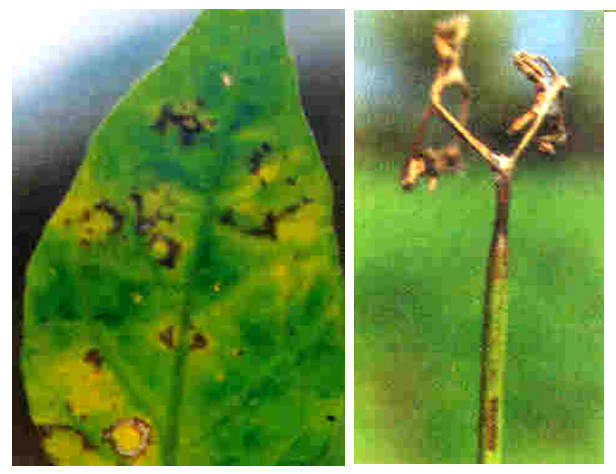
CHILLI NECROSIS DISEASE
(Groundnut bud necrosis virus, GBNV)
This disease is characterized by bronzing of young leaves, chlorosis
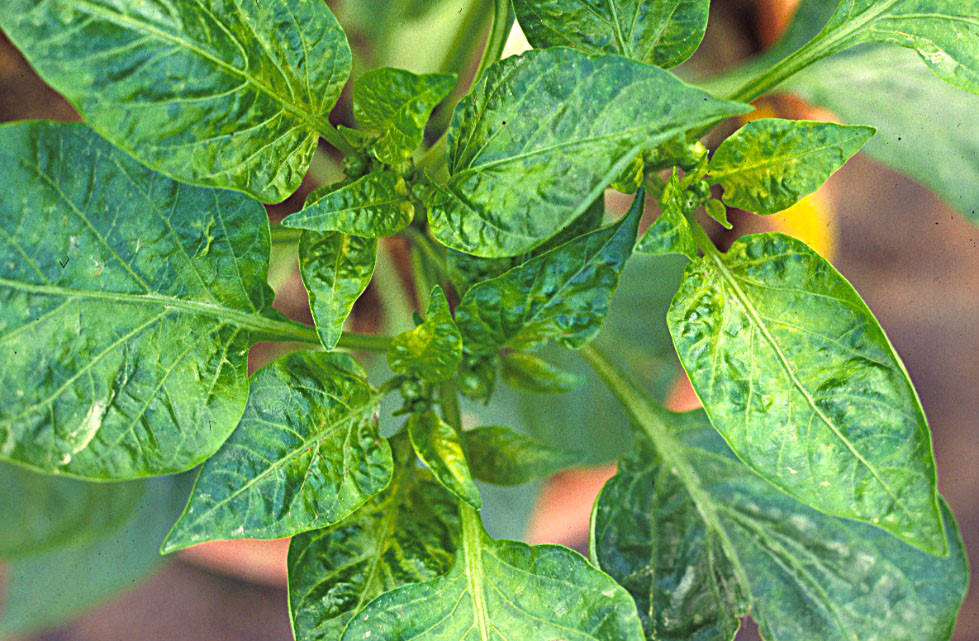
CHILLI MILD MOTTLE AND MOSAIC DISEASE
(Pepper mild mottle virus and Tobacco mosaic virus)
The disease is characterized by mild mottling with light green areas
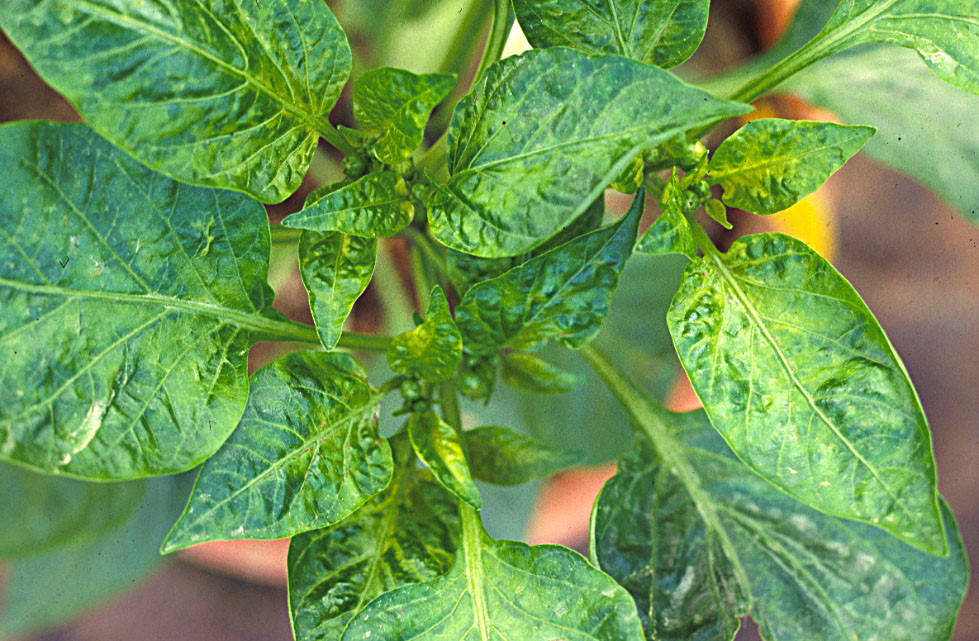
Chilli diseases have always been an important factor for the loss.
